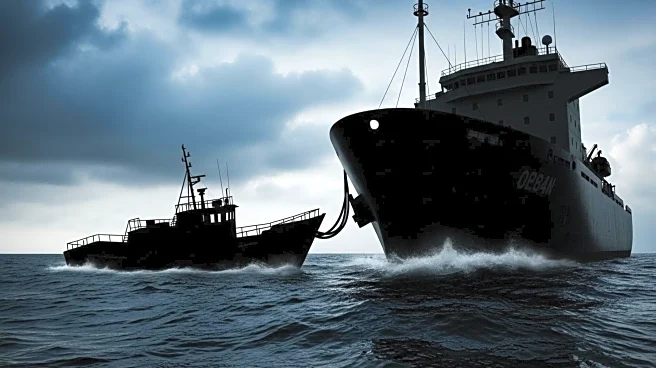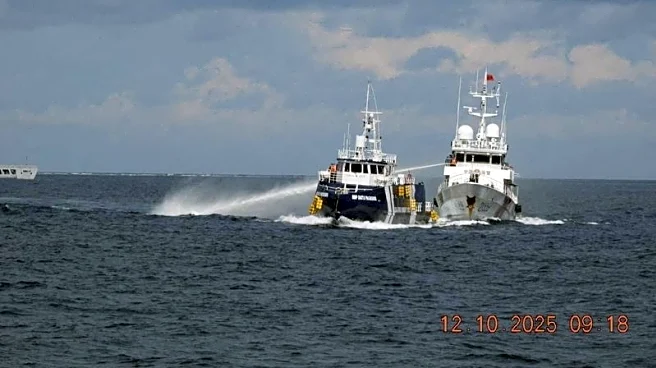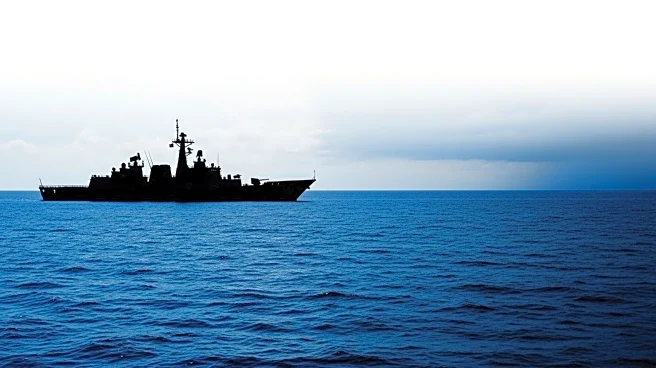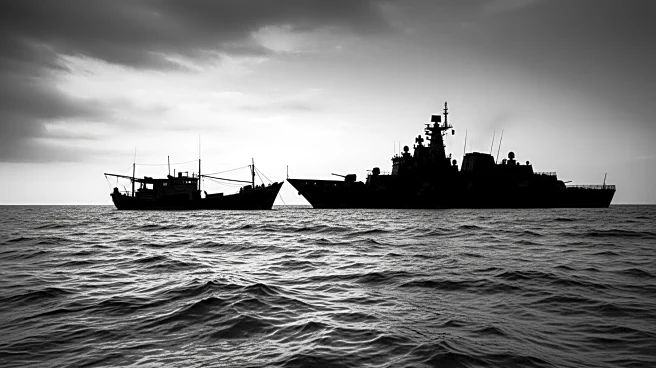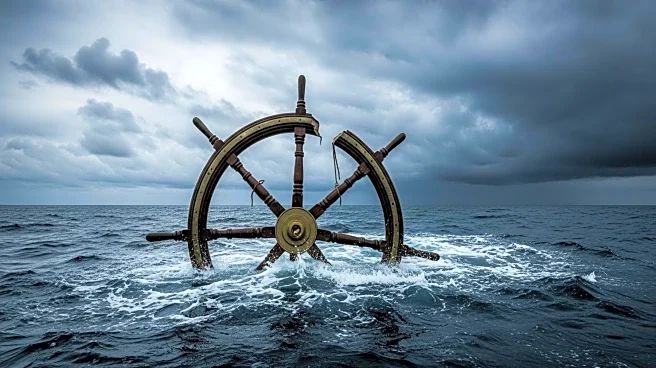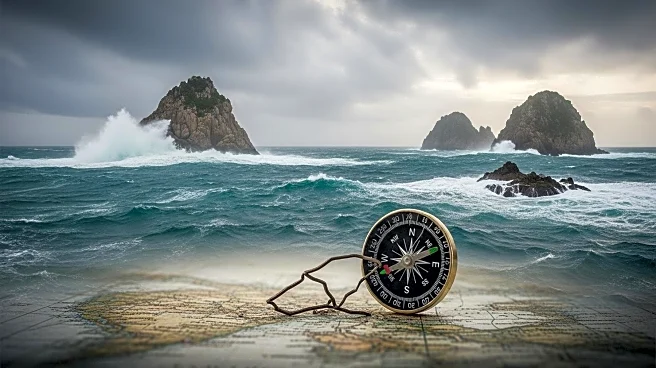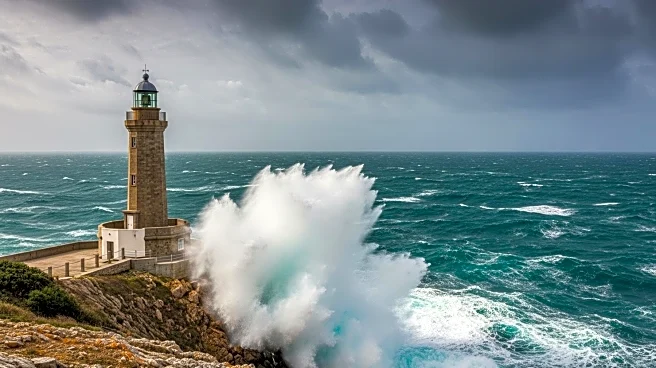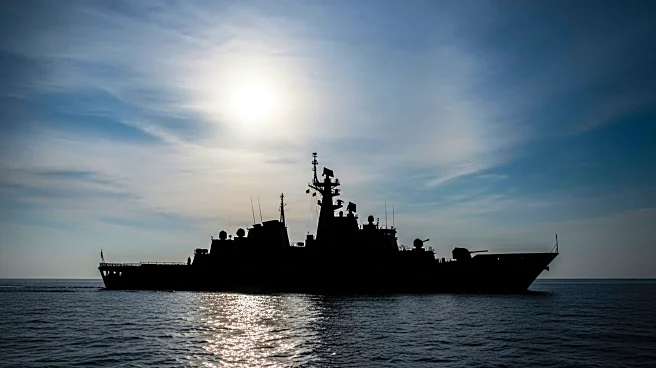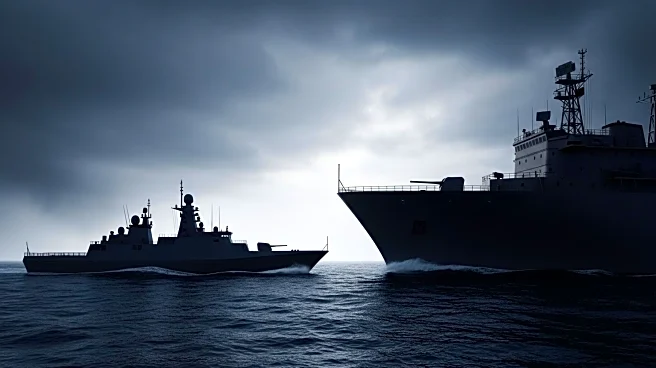What's Happening?
The Philippines and China have accused each other of responsibility for a maritime confrontation near disputed islands in the South China Sea. The incident involved Chinese maritime forces deploying water cannon and ramming a Filipino vessel near the Philippine-occupied Thitu Island, known locally as Pag-asa. The Philippine Maritime Council has strongly condemned the incident and vowed to pursue appropriate diplomatic action. According to Manila's coast guard, three vessels were anchored near the island as part of a government program to protect local fishermen when Chinese ships reportedly approached and used water cannon to intimidate them. An hour later, a Chinese coast guard ship allegedly fired its water cannon directly at a Philippine vessel before ramming its stern, causing minor damage but no injuries. China's coast guard claims that two Philippine government vessels illegally entered waters near Sandy Cay, leading to a collision. Beijing holds Manila responsible, stating a Philippine vessel dangerously approached a Chinese coast guard ship.
Why It's Important?
This incident further escalates tensions in the South China Sea, a region already fraught with territorial disputes. The area is a strategic trade route facilitating over $3 trillion in annual ship-borne commerce, making stability crucial for international trade. The confrontation highlights ongoing geopolitical tensions between China and the Philippines, with potential implications for regional security and international relations. The U.S. has expressed concern, with Ambassador MaryKay Carlson condemning China's actions as aggressive. The situation underscores the complex dynamics in the South China Sea, where multiple nations, including Brunei, Indonesia, Malaysia, the Philippines, and Vietnam, assert claims over portions of the waterway.
What's Next?
The Philippine authorities have vowed to continue operations in the area to protect Filipino fishermen's livelihood, indicating ongoing maritime activities despite the confrontation. Diplomatic efforts may intensify as the Philippines seeks to address the incident through international channels. The U.S. may also increase its involvement, given its condemnation of China's actions. The situation could lead to further diplomatic exchanges or negotiations aimed at de-escalating tensions and ensuring safe passage in the contested waters.
Beyond the Headlines
The incident raises broader questions about maritime sovereignty and international law in disputed territories. It highlights the challenges of enforcing territorial claims in the South China Sea, where overlapping claims and military presence complicate peaceful resolution. The confrontation may influence future diplomatic strategies and alliances in the region, as countries navigate the balance between asserting territorial rights and maintaining regional stability.
